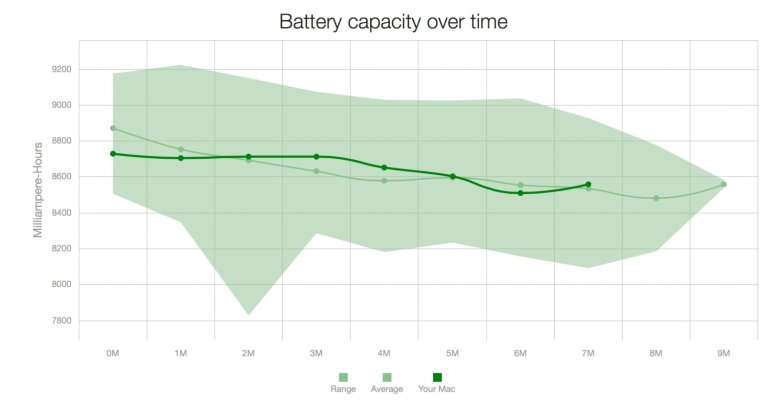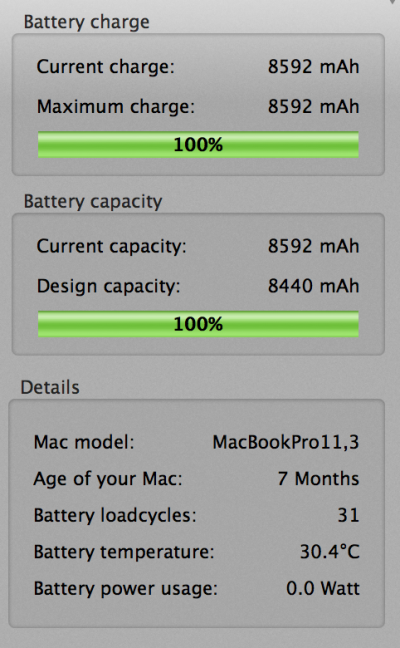TromboneAl
Give me a museum and I'll fill it. (Picasso) Give me a forum ...
- Joined
- Jun 30, 2006
- Messages
- 12,880
My 17" laptop sits on my desk, and I expect I will never take it on the road (I use my Nexus 7 for that), or need to use it on the battery.
However, my understanding is the having the battery almost always at near 100% charged degrades its lifetime (I'm using "lifetime" to refer to the number of years that a battery will remain viable rather than the "life" in terms of hours of charge). From what I've read, a battery that stays between 40% and 70% charge might last twice as long.
The obvious solution would be to have the computer manage this. Have it stop charging when it reaches 70% and start again at 40% (if you choose this option). Of course the computer companies have no incentive for this--they'd rather sell new batteries.
Another solution would be to have a hardware device. You plug your computer into it, and it monitors charge and effectively unplugs or plugs in the laptop at the appropriate times. Probably not a viable product.
I once downloaded an app that would display a warning when the battery got below one level or above another, manually removing or reinstalling plug when needed. That was not convenient, and didn't work when I wasn't at the computer.
So now I have a new scheme: I will plug my laptop into a timer:

And estimate how many hours per day to keep it between 40% and 70% charge. Since it is always in sleep mode overnight, I will have the timer shut it off during those hours.
What do you think?
However, my understanding is the having the battery almost always at near 100% charged degrades its lifetime (I'm using "lifetime" to refer to the number of years that a battery will remain viable rather than the "life" in terms of hours of charge). From what I've read, a battery that stays between 40% and 70% charge might last twice as long.
The obvious solution would be to have the computer manage this. Have it stop charging when it reaches 70% and start again at 40% (if you choose this option). Of course the computer companies have no incentive for this--they'd rather sell new batteries.
Another solution would be to have a hardware device. You plug your computer into it, and it monitors charge and effectively unplugs or plugs in the laptop at the appropriate times. Probably not a viable product.
I once downloaded an app that would display a warning when the battery got below one level or above another, manually removing or reinstalling plug when needed. That was not convenient, and didn't work when I wasn't at the computer.
So now I have a new scheme: I will plug my laptop into a timer:

And estimate how many hours per day to keep it between 40% and 70% charge. Since it is always in sleep mode overnight, I will have the timer shut it off during those hours.
What do you think?





